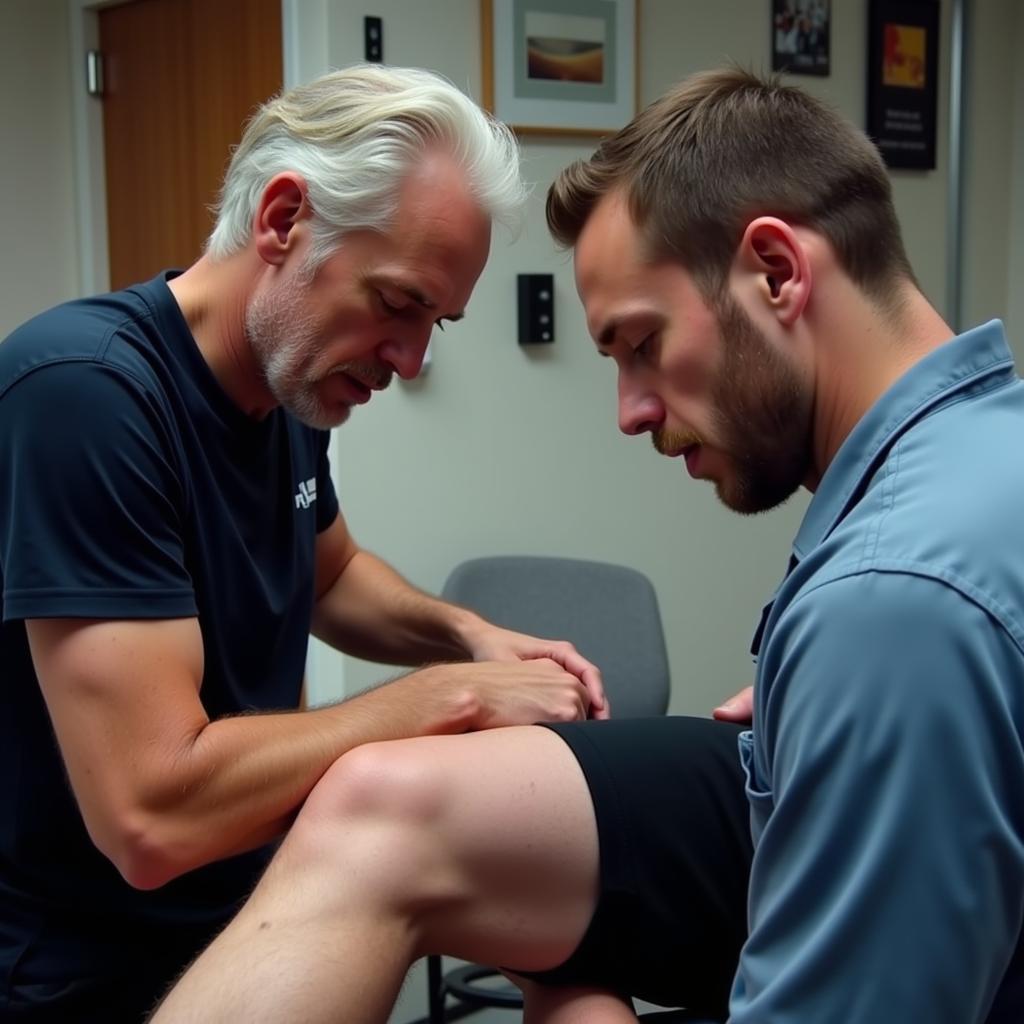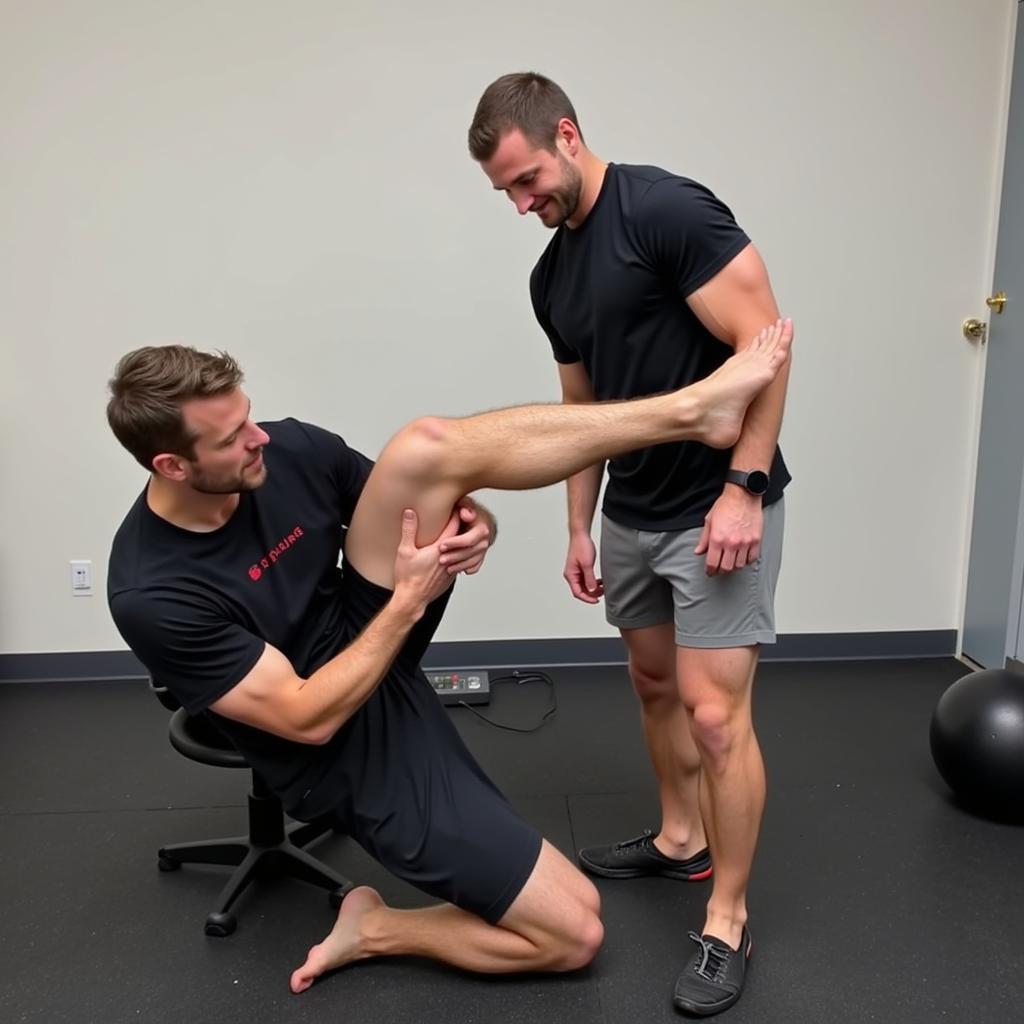Haaland Injury: The Striker’s Road to Recovery
October 10, 2024A Haaland injury is news that strikes fear into the heart of any football fan. Known for his incredible speed, strength, and goal-scoring prowess, Erling Haaland has quickly become one of the most exciting players in the world. His absence from the pitch due to injury is felt not only by his team but by the entire footballing world.
 Erling Haaland receiving treatment for a muscle injury
Erling Haaland receiving treatment for a muscle injury
Understanding the Impact of Haaland’s Injuries
Haaland’s playing style, characterized by explosive sprints and powerful shots, unfortunately makes him susceptible to certain types of injuries. Muscle strains and sprains, particularly in the hamstring and groin areas, have been recurring issues for the young striker.
 Erling Haaland undergoing injury prevention exercises
Erling Haaland undergoing injury prevention exercises
These injuries, while not career-threatening, can sideline him for crucial weeks or even months, impacting his team’s performance and his personal pursuit of goals and titles.
The Science Behind Haaland’s Injury Recovery
When Haaland suffers an injury, a team of medical experts, including doctors, physiotherapists, and sports scientists, work tirelessly to ensure his swift and safe return to the pitch. Their approach involves a multi-faceted strategy:
- Accurate Diagnosis: Identifying the exact nature and extent of the injury through physical examination and imaging techniques like MRI scans.
- Tailored Treatment Plan: Developing a personalized rehabilitation program based on the specific injury, focusing on reducing pain, inflammation, and restoring range of motion.
- Gradual Return to Training: Implementing a phased approach to reintroduce physical activity, starting with low-impact exercises and gradually increasing intensity to build strength and endurance.
- Performance Monitoring: Closely tracking Haaland’s progress throughout the recovery process, using performance data to assess his readiness to return to competition.
Preventing Future Injuries: A Proactive Approach
Preventing future injuries is just as important as treating existing ones. To minimize the risk of further setbacks, Haaland follows a comprehensive injury prevention program that includes:
- Strength and Conditioning: Engaging in regular strength training exercises to strengthen key muscle groups, improve flexibility, and enhance his body’s ability to withstand the demands of professional football.
- Nutrition and Recovery: Following a balanced diet tailored to his training needs, ensuring adequate hydration, and prioritizing sleep and rest to optimize recovery and reduce injury risk.
- Load Management: Working closely with his coaches and medical staff to carefully manage his training load, ensuring adequate rest and recovery periods to prevent overuse injuries.
 Erling Haaland celebrates scoring a goal after returning from injury
Erling Haaland celebrates scoring a goal after returning from injury
Staying Positive: The Mental Side of Injury
Dealing with an injury can be mentally challenging for any athlete, and Haaland is no exception. However, he has consistently demonstrated a positive mindset and unwavering determination throughout his recovery processes. Staying connected with his teammates, setting realistic goals, and focusing on the positive aspects of his rehabilitation have been crucial in maintaining his mental well-being and motivation.